Chronic Wasting Disease Test Sampling Kit
How to Sample Lymph Nodes
Step by Step Instructions
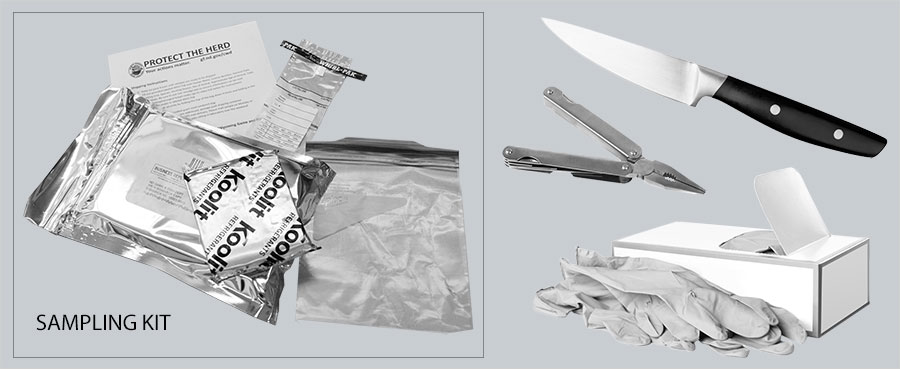
Supplies
- Sampling Kit
- Sharp knife
- Pliers or a multitool (to grip the lymph nodes)
- Gloves
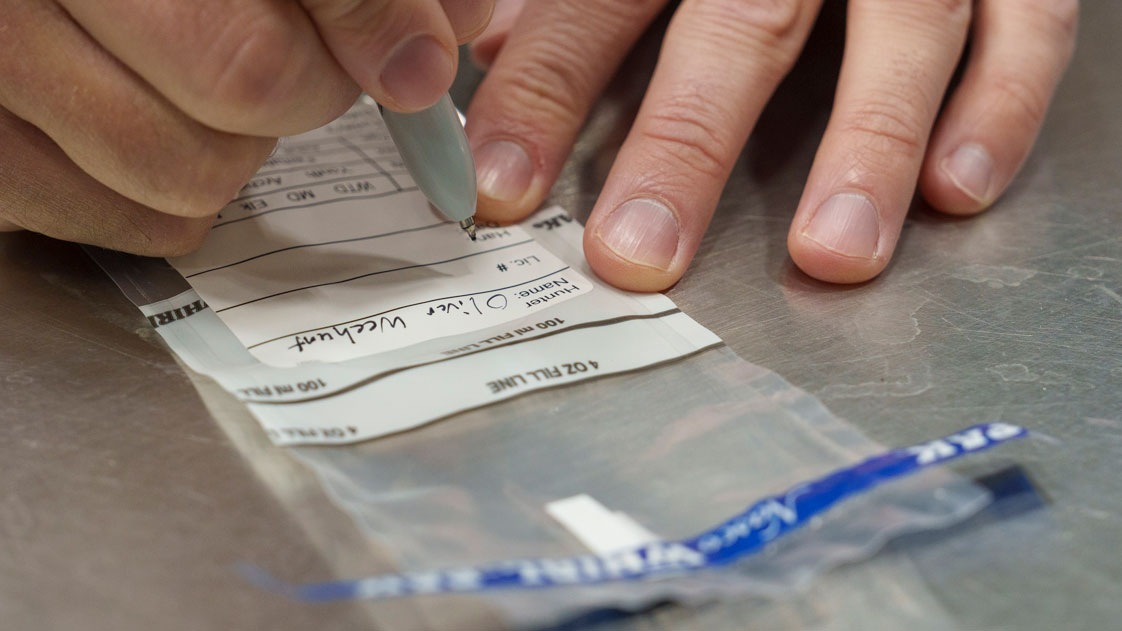
Lymph Node Removal
Before you begin, fill out your labeled Whirlpack with the required information. This will allow the Department to contact you when results are made available.
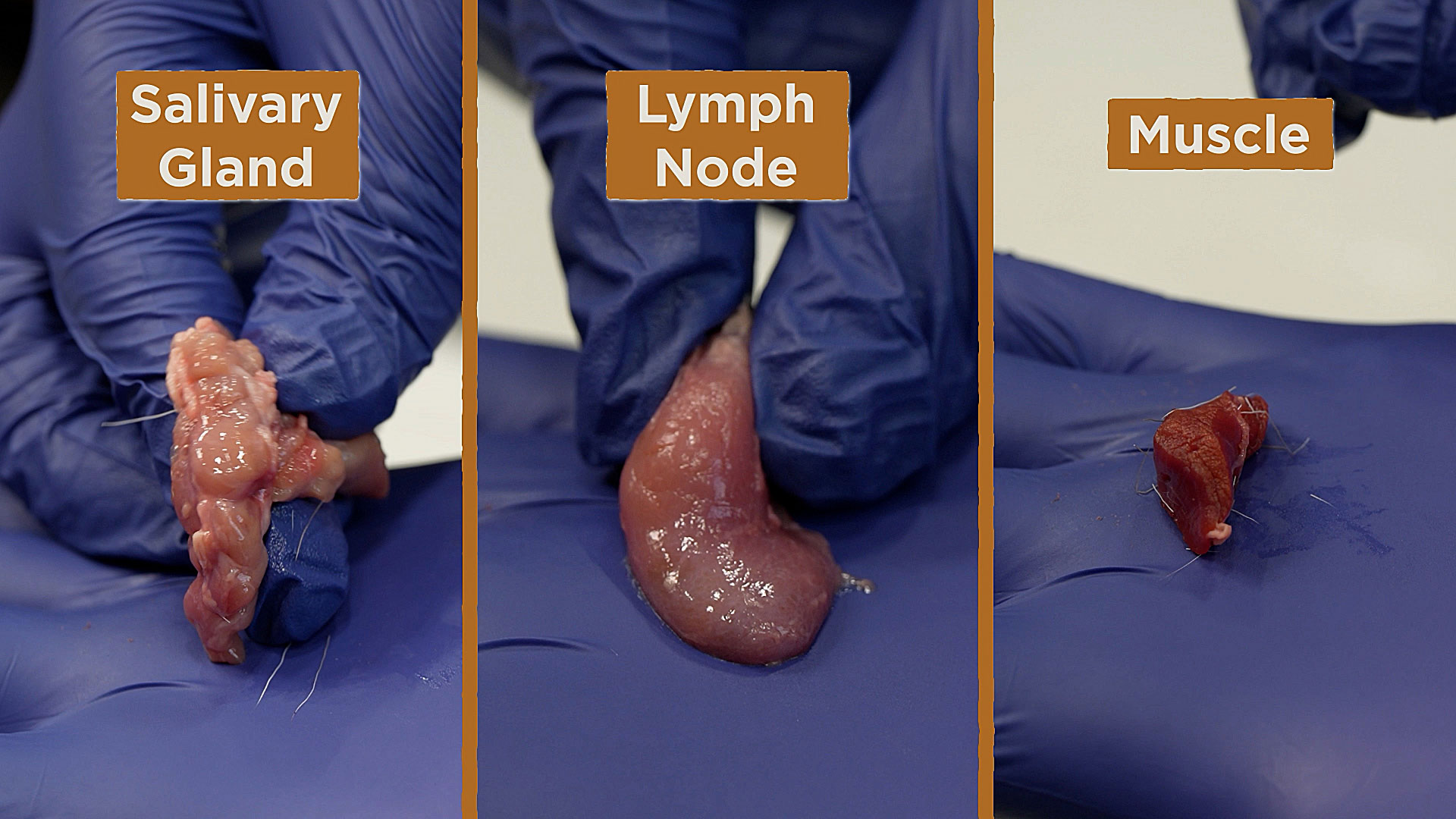
Identifying Lymph Nodes
- The lymph nodes are typically the size of a pea to a grape, can be gray to purple, and will feel firm compared to the surrounding areas.
- They will also have a smooth outside texture which can help you distinguish them from salivary glands, which look like chewed bubblegum, or muscle, which looks like meat.
Locating the Nodes Needed for CWD Sampling
- Specific lymph nodes located at the back of the throat are needed for CWD sampling.
Steps to Remove Lymph Notes
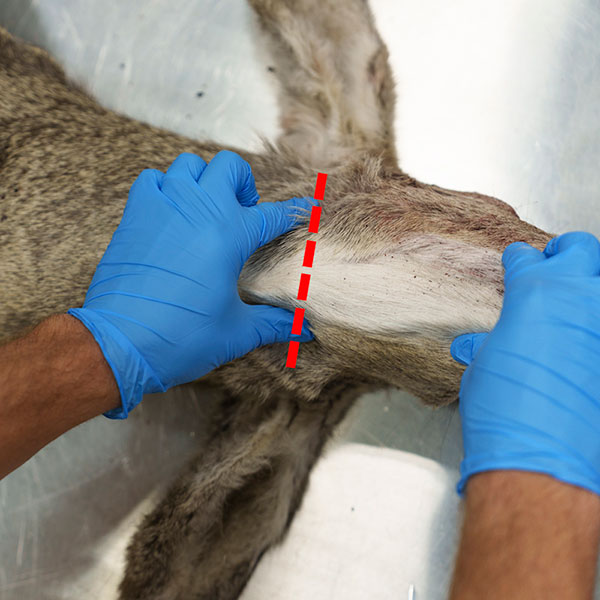
1. Position the deer so that the nose is pointed away from you and the top of the head is facing downward and feel for the back of the lower jawbone.
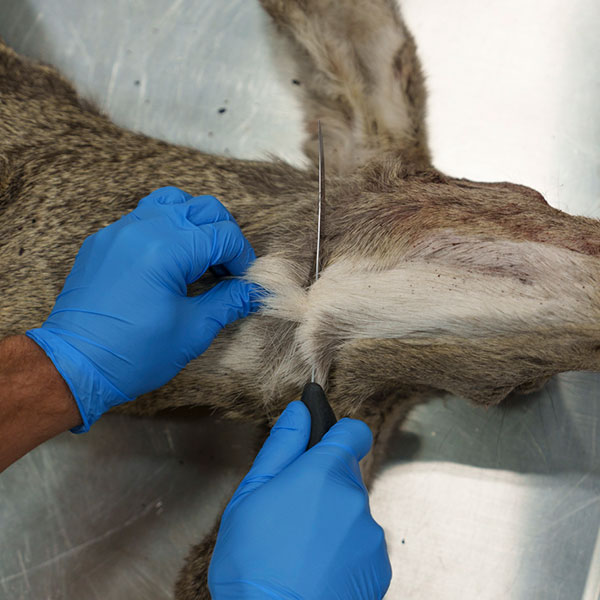
2. Following right behind the jawbone, make a deep cut though the soft portion of the throat. Be sure to cut all the way down to the spine.
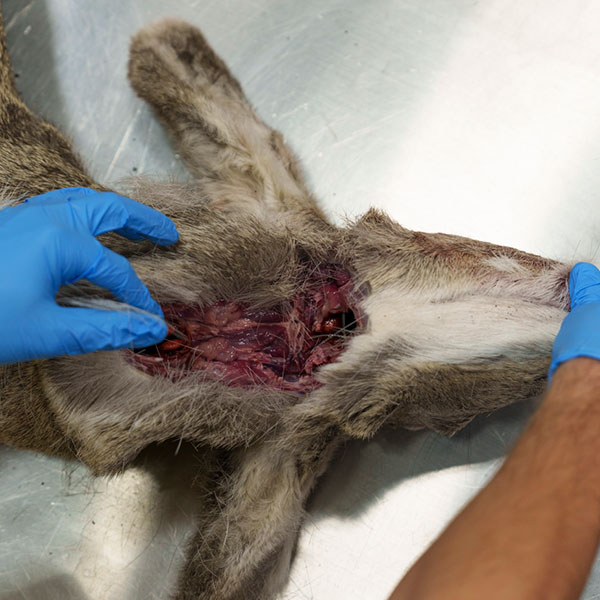
3. Stretch open the head and neck joint to expose the structures.
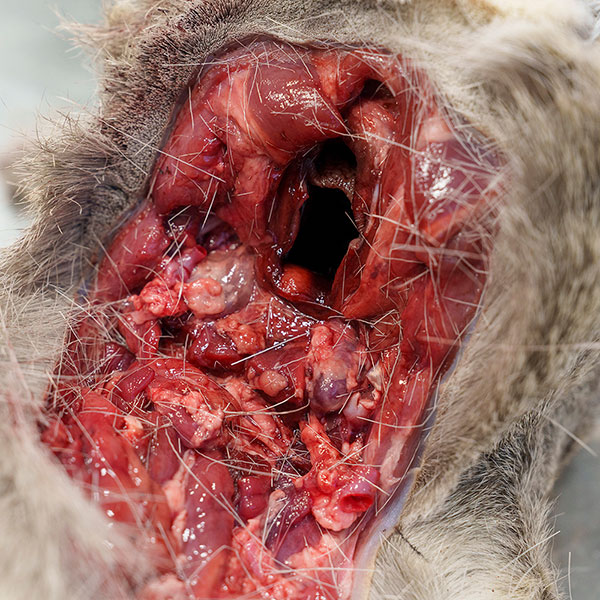
4. The lymph nodes will be located just below and to the outside of the trachea (or windpipe) and above the bone and muscle tissue.
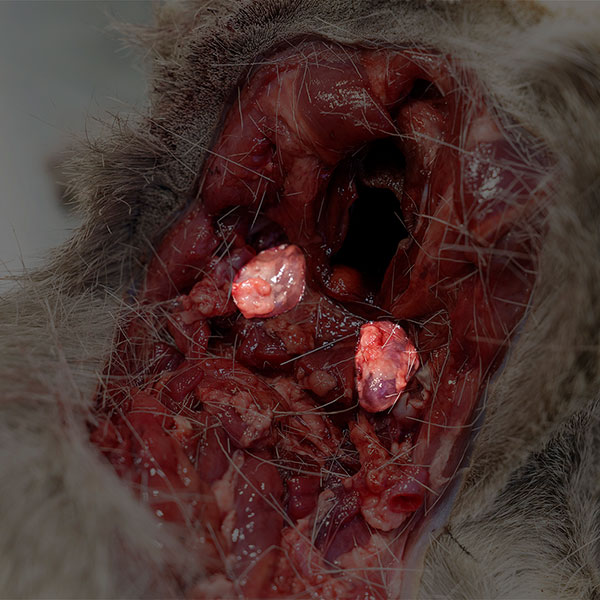
4a. You may have to cut away a bit of the muscle and other soft tissue to locate them, or they may be visible immediately depending on the exact location of your cut.
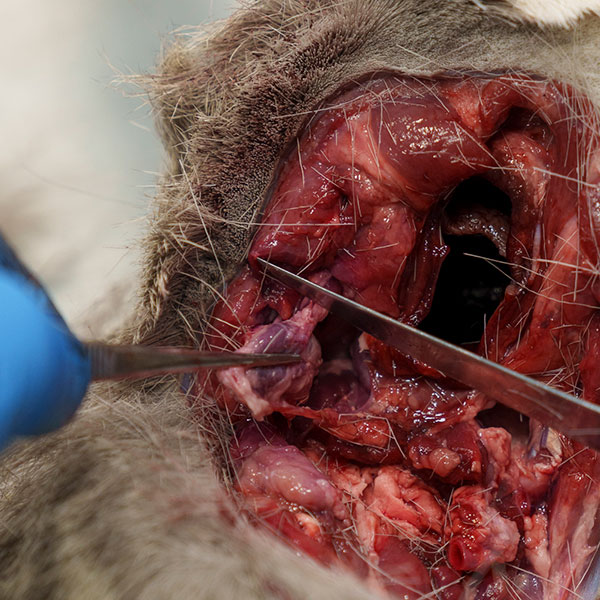
5. After locating the lymph nodes, cut them loose from the surrounding connective tissue. If you accidently cut into the lymph nodes or cut them in half, that is okay.
Lymph Node Shipping
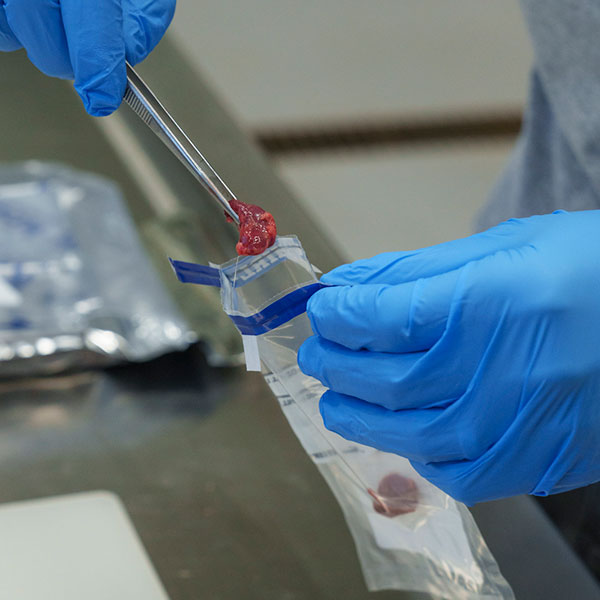
1. Place lymph nodes into your labeled Whirlpack.
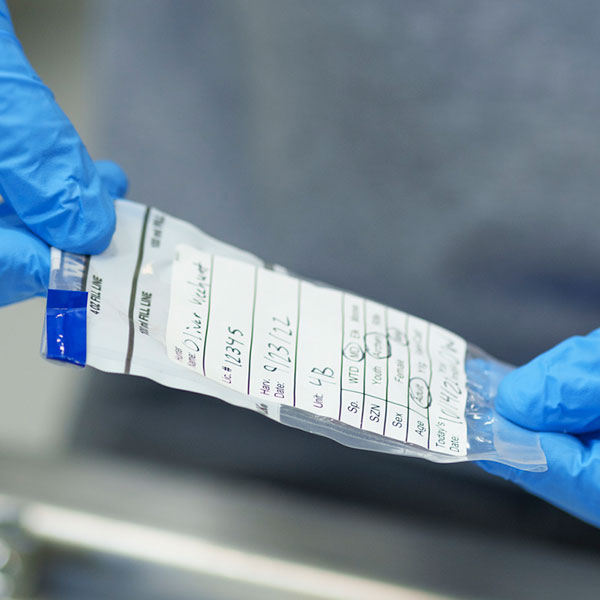
2. Fold the top of the Whirlpack four times and bend in the wire tabs.
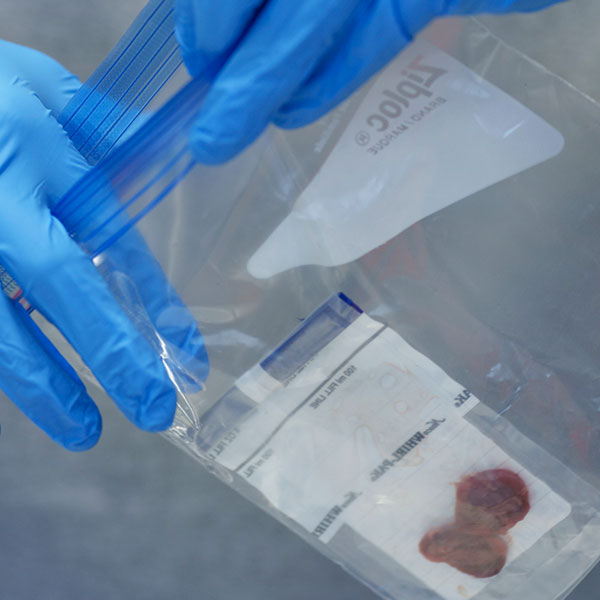
3. Place the Whirlpack into the quart sized plastic baggie.
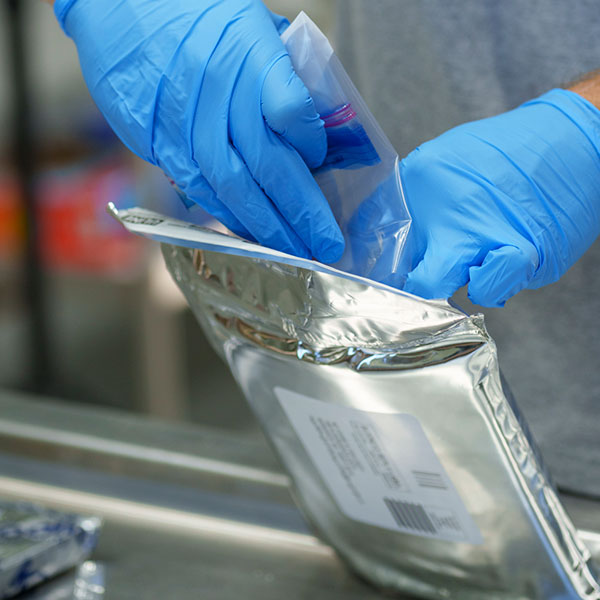
4. Place the baggie with the sample in the insulated mailer.
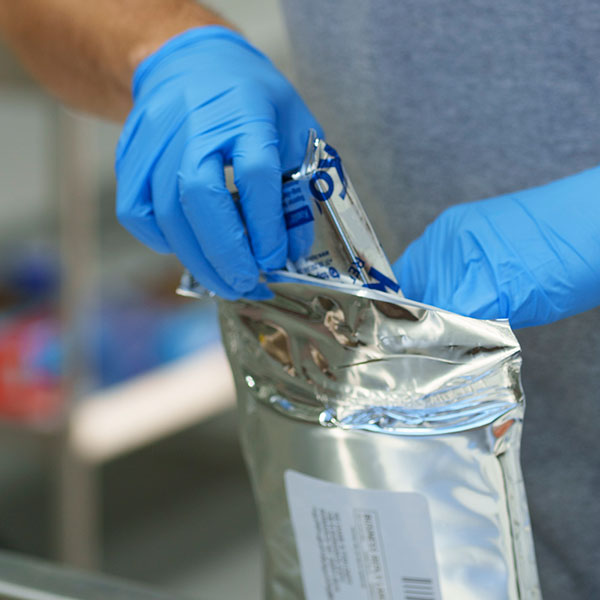
5. Ensure the ice pack is frozen and place it in the insulated mailer.

6. Seal the insulated mailer.
Mail or Drop Off Sample
If you happen to live near a Game and Fish office, the mailer can be dropped off during business hours to shorten turnaround time.
Otherwise, it can be placed in a USPS mailbox where it will be sent to the Game and Fish lab. Postage is pre-paid. Please mail your sample on Monday or Tuesday to ensure it arrives at our laboratory as quickly as possible.
Results
Results can be expected within 4 weeks from when the lymph nodes are sent. They will arrive via your North Dakota Game and Fish Account Inbox.
Please contact the Department at 701-204-2161 if you have any questions about CWD sampling.
